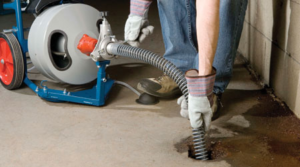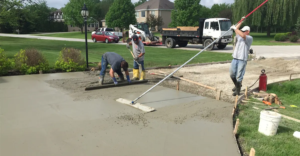The word barbecue can invoke all sorts of images: en plein air gatherings, seersucker suits and gingham, and fiercely competitive contests. Some people zealously define it as large hunks of meat cooked low and slow with indirect heat and smoke. Click Chandler BBQ to learn more.
In the Southern US, pork is the star, and sauces are typically tomato-based. Further west, Tennessee barbecue is a melting pot of styles, while Kansas City is known for its dry rubs and brisket.

As an American cuisine, barbecue is part of our national identity. It’s the food we eat at summer cookouts, family gatherings, and festivals across the country. Many of us also enjoy BBQ dishes at restaurants, which are often accompanied by sweet, spicy barbecue sauces. However, there are some people who want to shrink the definition of the word barbecue to only refer to meat cooked at high temperatures in steel closed “pits.” This is not true barbecue as we know it. It is actually another type of cooking called braising.
The term barbecue can be traced back to prehistoric times, as early humans (Homo erectus) discovered fire and started to barbeque their food over the flames. It’s likely that the first barbecued foods were meats, such as the thigh of a woolly mammoth.
When Europeans began to colonize America, they brought with them their own traditions of grilling and smoking meats. In the South, these practices combined with indigenous Native American techniques and African slaves’ methods of slow-cooking meat on spits or improvised racks over hot coals. Many images and wood carvings from this era depict a trench with a tree sapling placed across the bottom, whole animals butterflied on top of the saplings and surrounded by a bed of hot coals.
A few revisionists have tried to claim that the barbecue we now know and love originated only in the American South, where it is still a popular cuisine today. However, the term barbecue has been used in this broad sense in all English-speaking countries for centuries, and has become part of our culture and vocabulary. Even famous chefs and cookbook writers like James Beard, Julia Child, MFK Fisher, and Craig Claiborne use the terms barbecue and grilling interchangeably.
The earliest traceable origins of barbecue are thought to be among the Arawak Indian tribes, who used a pit-shaped cooking device called a barbacoa to grill their meat and vegetables over an open fire. Christopher Columbus was familiar with the term and he may have even eaten at a barbacoa during his trip to the Caribbean Islands.
Methods
When it comes to barbecue, there are many different ways to prepare your food. Some methods use a dry rub or marinade, while others involve smoking with varying levels of smoke. The type of wood used for smoking also has a significant impact on the flavor of the meat. Experiment with different combinations of seasonings and sauces to find the perfect blend.
Another method of barbecue is to cook the meat directly over the heat. This method is ideal for foods that require a good sear, such as steaks and burgers. The resulting flavour is rich and caramelized. If you are cooking meat, a thermometer should be on hand to monitor the internal temperature. A medium-rare steak will feel soft to the touch and have a pink colour.
A more indirect approach is to smoke the food over low temperatures using a variety of types of wood. This technique can take longer than direct grilling, but the result is a deliciously smoky flavour. It is important to soak the planks beforehand so that they can absorb more smoke. If the plank catches fire while the food is cooking, the embers can be blown off by spraying them with water.
Lid-on barbecues, such as Weber grills, allow you to control the heat and ensure that the food is cooked evenly. They also allow the smoke to circulate around the food and enhance its flavour. This method is especially effective for foods that need to be cooked slowly.
The smokiest, most flavourful barbecue is often done with a rub or marinade, then smoked at low temperatures. The smoky flavour infuses the meat with a delicious depth of taste, while the added moisture keeps it juicy and succulent. The juiciness of the meat is also enhanced by the fat content, so choose fatty cuts such as beef brisket or chicken thighs for the best results.
Flavors
Despite the many regional variations of barbecue, some basic flavor characteristics remain constant. These include a balance of sweet, tangy, and savory elements. The sweetness of sauces may come from a variety of sources, including sugar and molasses. A range of spices and seasonings can also be added to create different flavors. The acidity of sauces is typically balanced by the addition of vinegar or lemon juice.
The tangy flavor of mustard is another common feature of barbecue sauces. Mustard-based barbecue sauces are popular in South Carolina and the surrounding areas, where they pair well with the region’s famous pulled pork sandwiches. These sauces are usually a bit on the peppy side and have a zingy yellow color.
A tomato base is the foundation for most barbecue sauces. The addition of ketchup and other ingredients can add sweetness, tanginess, and even heat. Kansas City-style barbecue sauce is a good example of this. It has a balance of sweet and tangy flavors that pairs well with almost any meat.
Other popular BBQ flavors include smoky and fruity. Smoky BBQ sauces can be made with a variety of flavored woods, such as applewood, hickory, or mesquite. These flavors can be subtle or more dramatic depending on the recipe. Fruity BBQ sauces can pair with a variety of meats, but they are particularly tasty with chicken and pork.
Some regional styles of barbecue sauce are instantly recognizable, like playground-yellow mustard sauces or Big Bob Gibson’s mayo-based Alabama white sauce. But other regional barbecue sauces are less familiar, such as Eastern Carolina and Western Carolina BBQ sauces, which are both vinegar-based. Eastern Carolina sauces are on the sharper side and pair nicely with pulled pork, while Western Carolina BBQ sauces combine a vinegar base with ketchup or tomato sauce to give it a smoother taste.
In Texas, the classic Central-Texas barbecue style is savory and tomato-based. The state’s sauces have a thin consistency and are usually a little less sweet than other styles. They can be used on a variety of meats, but they work best with smoked beef, such as brisket or pork plate ribs. Worcestershire sauce is often added to savory barbecue sauces, adding an extra depth of flavor and umami. Liquid smoke is another common ingredient that can be added to a barbecue sauce. It provides a hint of smokiness without actually smoking the meat, which is sometimes difficult to achieve in a restaurant environment.
Restaurants
Whether smoked low and slow or slathered with sauce, barbecue is a regional cuisine, from Texas to Kansas City to the Southeast. The meaning of the word can change with the weather and the seasons, but generally it means well-seasoned meat cooked low over wood until it develops a pink “smoke ring.” Sauces and sides are a matter of taste, but the meat is the main event.
While New York City may not rank as a barbecue capital when compared to spots in South Carolina, North Carolina, Austin, or anywhere in Alabama, there are now more than enough BBQ restaurants to satisfy every appetite. And while the options may differ, all share a commitment to delivering great food and a warm welcome.
Hoodoo Brown’s, for example, is an old-school operation with a focus on quality meats and a no-frills menu. But its Williamsburg location also leans toward eclecticism, with a menu that includes Jamaican jerk ribs and pork belly along with the standard brisket and spare ribs. Fette Sau, on the other hand, serves as both restaurant and bar, with a drink program that offers a selection of heritage-bred smoked meats, craft beers, and whiskey. The result is a place that reflects the passions of its owners.


